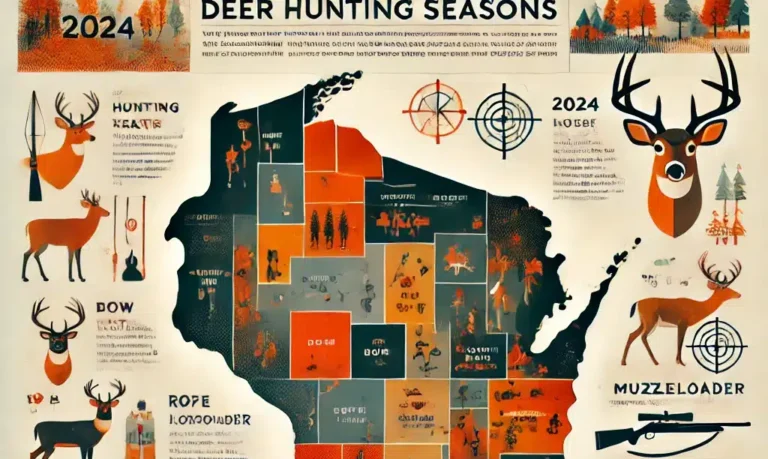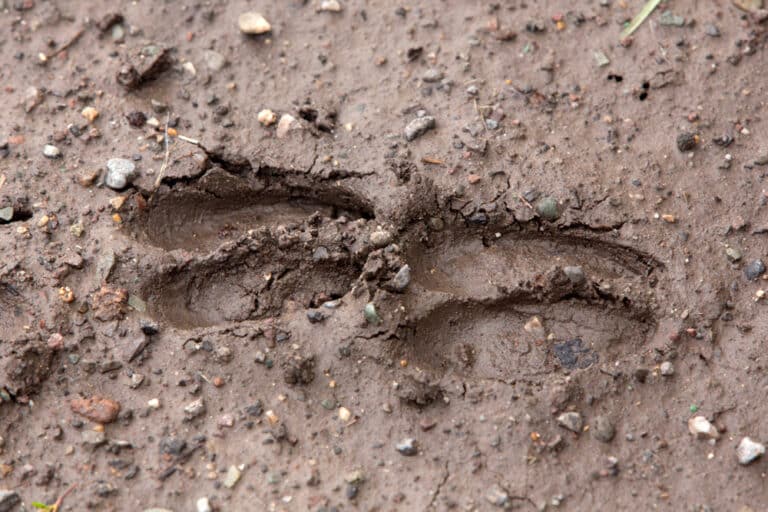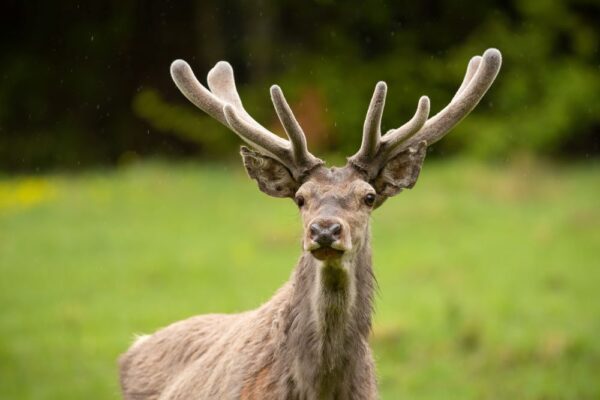Different types of deer species have long captured the imagination of wildlife enthusiasts and nature lovers alike. They are found in various parts of the world and display a remarkable range of adaptations and behaviors. With their graceful appearance and impressive antlers, deer have become an iconic symbol of wilderness and natural beauty.

A Brief Overview
Deer species are known for their distinct features, such as slender bodies, long legs, and elegant necks. They possess hooves that aid in their swift movements through various habitats, including forests, grasslands, mountains, and wetlands.
These herbivorous mammals feed on grasses, leaves, shoots, berries, and fruits. The deer family encompasses around 50 species globally but can be broadly classified into two subfamilies: Cervinae (genuine Deer) and Capreolinae (New World deer).
Each subfamily consists of several unique types of deer with distinct characteristics and geographical distributions. Understanding these differences is deer species crucial for wildlife enthusiasts seeking to appreciate their beauty and conservation efforts to preserve these remarkable creatures.
The Importance of Understanding Different Types
Appreciating the diversity within the deer species enables us to gain valuable insights into the interconnectedness between species and their environment. By studying different types of deer in detail – their preferred habitats, feeding patterns, and reproductive behaviors – we can comprehensively understand the ecosystems they inhabit.
This knowledge aids conservationists in making informed decisions regarding habitat preservation strategies necessary for maintaining healthy populations.
Moreover, understanding different types of deer has practical implications for hunting regulations and management practices. Wildlife management authorities rely on accurate identification techniques to monitor population sizes accurately.
Detailed knowledge about specific deer species and subspecies allows for targeted conservation efforts that address unique challenges faced by each deer type, ultimately contributing to the preservation of biodiversity.
Additionally, studying the behaviors and adaptations of deer types can provide insights into broader ecological concepts such as competition for resources, predator-prey dynamics, and even climate change impacts.
By unraveling the intricacies of deer biology and behavior, researchers can better understand the delicate balance that sustains ecosystems. Delving into the world of different types of deer provides a fascinating glimpse into the wonders of nature.
Understanding their diversity extends beyond mere appreciation; it plays a vital role in wildlife conservation efforts and contributes to our knowledge of ecological processes. As we continue to explore the intricate lives led by these magnificent creatures, let us embrace their presence as an opportunity to connect with nature and work towards deer species long-term protection.
Red Deer (Cervus elaphus)
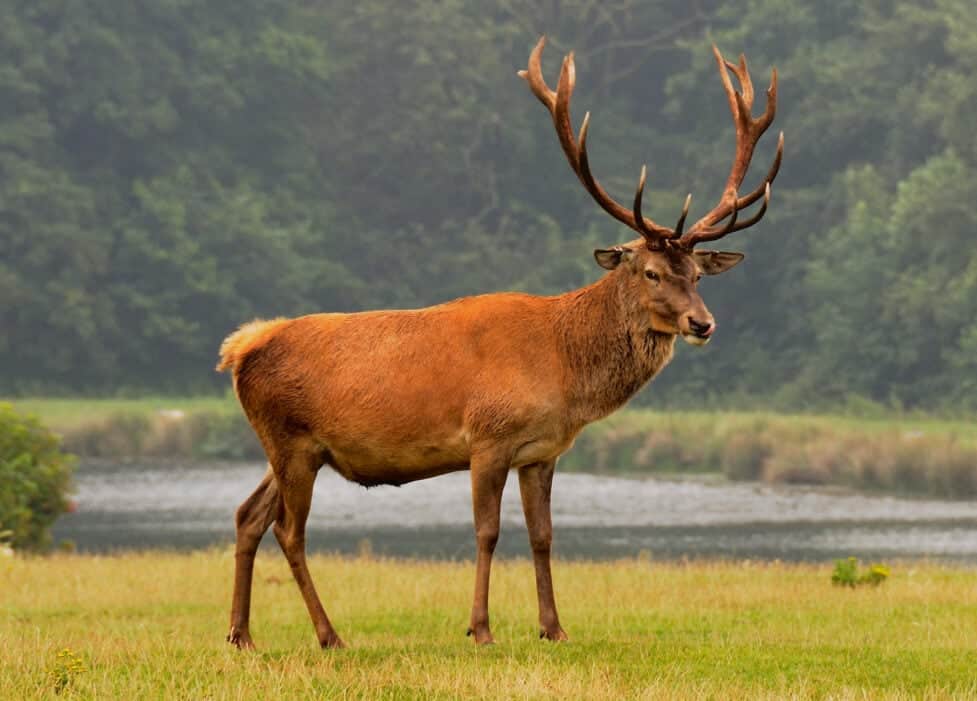
The majestic Red Deer, scientifically known as Cervus elaphus, is one of the most iconic deer species found across Europe, Asia, and North Africa. With its imposing size and regal antlers, this species captivates wildlife enthusiasts and casual observers.
Red Deer inhabit a variety of habitats ranging from woodlands to open grasslands. Their distribution spans diverse regions, including the British Isles, Scandinavia, the Alps, and North Africa.
Physically, Red Deer exhibit sexual dimorphism, with males (stags) much more significant than females (hinds). Stags can weigh up to 600 pounds and stand about 4 feet tall at the shoulder.
The most distinctive feature of Red Deer is their impressive antlers that adorn the heads of mature males during the breeding season or rut. Antler growth begins in spring and reaches full development by autumn when stags engage in fierce battles for dominance.
In addition to their striking appearance, Red Deer possess fascinating behavioral traits. They prefer living in social groups called herds, typically led by a dominant stag.
During mating season, stags emit deep roars to establish their territory and attract hinds while engaging in competitive displays with other males. These rituals often involve parallel walks or clashes between antlers.
Sika Deer (Cervus nippon)
The charming Sika deer species, scientifically known as Cervus nippon or “Nihonjika,” holds a special place among deer species due to its unique coat color variations observed within subspecies across its extensive range throughout East Asia. These variations can range from reddish-brown to nearly black hues with contrasting white spots adorning their backs during summer.
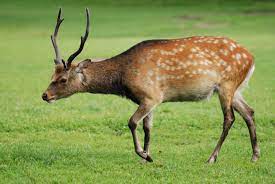
Sika Deer typically inhabit many environments, such as coniferous forests, deciduous woodlands, and marshy wetlands. They have adapted remarkably well to different terrains, including mountainous areas and coastal regions.
These 5an, China, Korea, and parts of Russia. In addition to their striking appearance and adaptable nature, Sika Deer exhibit exciting adaptations that enable them to thrive in their habitats.
For instance, their small yet agile bodies allow them to navigate through dense vegetation effortlessly. Furthermore, Sika Deer has been swimming between islands or even across narrow straits when searching for new territories or food sources.
Understanding the intricacies of these distinctive deer species within the Cervinae subfamily offers invaluable insights into the rich tapestry of biodiversity within the world of ungulates. From the grandeur of Red Deer’s antler displays and mighty roars to the subtle elegance of Sika Deer’s color variations and adaptability across varied landscapes—each species contributes uniquely to our understanding of wildlife ecology and conservation efforts.
Capreolinae Subfamily (New World deer)
White-tailed Deer (Odocoileus virginianus)
The White-tailed Deer commands attention as one of North America’s most iconic mammals. Scientifically known as Odocoileus virginianus, it is well-distributed throughout the continent in varied habitats such as forests, grasslands, and even suburban areas.
Its range extends from southern Canada through most parts of the United States into Central America. Distinctive features define this species—the most notable being its large white tail that is raised when alarmed or during displays.
Moreover, White-tailed Deer exhibit sexual dimorphism, with bucks being more significant than does but sporting magnificent antlers rather than regal ones like Red Deer. Adults shed antlers annually during winter only to regrow the following year, a fascinating cycle that helps determine age and health.
White-tailed Deer display fascinating behaviors influenced by seasonal changes. They exhibit different activity patterns based on food availability and breeding cycles.
Bucks become more territorial during the rut, engaging in fierce battles to establish dominance and secure mating opportunities. Additionally, their ability to adapt to diverse environments has allowed them to thrive even in areas where human populations encroach upon their habitats.
Mule Deer (Odocoileus hemionus)
The Mule Deer, scientifically known as Odocoileus hemionus, roams across a significant portion of North America and is particularly fond of arid environments such as deserts, shrublands, and higher-elevation regions. This species demonstrates remarkable adaptations that aid survival in harsh conditions—a prominent example being its large ears that serve as effective heat dissipators, enabling Mule Deer to regulate their body temperature more efficiently. Mule Deer share similarities with White-tailed Deer but possess distinct characteristics.
Their namesake mule-like ears distinguish them at first glance. Bucks carry antlers with bifurcated forks branching from a central main beam instead of the tines present on White-tails’ antlers.
Moreover, Mule Deer exhibit different behavioral patterns compared to their eastern counterparts. These Deer have evolved strategies for thriving in arid landscapes with scarce water sources.
They can extract moisture from plants they consume while also reducing water loss through unique physiological mechanisms. The adaptability of Mule Deer allows them to navigate mountainous terrains gracefully while maintaining the impressive agility necessary for escaping predators.
By exploring the intricacies of these major types within the Cervidae family’s Cervinae and Capreolinae subfamilies—the Red Deer and Sika Deer under Cervinae and the White-tailed Deer and Mule Deer under Capreolinae—, we uncover a profound appreciation for the astounding diversity and remarkable adaptations that have evolved among these majestic animals. Understanding their characteristics, behaviors, and habitats is crucial for effective wildlife management and conservation efforts, ensuring the continued flourishing of these captivating species for generations to come.
Minor Types of Deer
Deer with Fangs: Muntjac (Muntiacinae) Subfamily
While the Muntjac subfamily may not be as widely known as their larger counterparts, they possess a distinctive feature that sets them apart – fangs. Found primarily in Southeast Asia and parts of South Asia, Muntjac deer exhibit an enchanting blend of elegance and pecThe them, the Common Muntjac (Muntiacus muntjak) stands out as a fascinating representative.
The Common Muntjac: A Delightful Enigma
The Common Muntjac, also known as the barking Deer due to its characteristic vocalizations, is a small-sized deer species with an average height of around 50 centimeters at the shoulder. Their coat varies from reddish-brown to dark brown or black, displaying intricate patterns unique to each individual.
Habitat and Distribution
Common Muntjacs are notably adaptable creatures, inhabiting many environments, including dense forests, shrublands, and grasslands across Southeast Asia. They can be found in India, Bangladesh, Thailand, Vietnam, and Indonesia. Their preference for dense vegetation ensures their survival by providing ample cover from predators while allowing them to forage on leaves, shoots, fruits, and flowers.
A Melodious Presence in Nature
One cannot help but be enchanted by the distinct vocalizations emitted by these charming creatures. The Common Muntjac possesses an array of calls, including barks or short grunts often heard during territorial disputes or when alarmed. These vocal exchanges serve as communication signals within their social groups and warnings of potential threats nearby.
A Diverse and ResiliWithuntjac, with its adaptability and the Common Muntjac’s modest size, successfully navigates through various habitats, making it a resilient species. Additionally, they have managed to maintain stable populations in many regions despite habitat fragmentation caused by human activities. Their ability to thrive in diverse ecosystems speaks to their resilience as a species.
Conclusion
Exploring the world of deer species unveils a tapestry of fascinating diversity. Each type of Deer contributes to our planet’s intricate web of life, from the majestic Red Deer and Sika Deer to the enigmatic Common Muntjac. Understanding these different deer types is crucial for wildlife enthusiasts, and conservation efforts aimed at protecting their can foster a deeper connection with these magnificent creatures’ habitats.
Recognizing their unique characteristics, studying their behavior, and appreciating their count creatures. Ultimately, this knowledge encourages us to take an active role in preserving their natural habitats and ensuring a harmonious coexistence between humans and the enchanting world of Deer.
Through conservation initiatives such as habitat preservation and responsible management practices, we can ensure that future generations will continue to marvel at the beauty and wonder of these remarkable animals. Let us embrace our responsibility as stewards of nature’s treasures and strive towards a harmonious future where all life forms thrive together.

